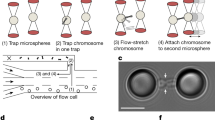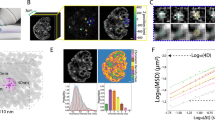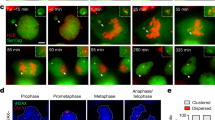Abstract
MITOTIC chromosomes are now being studied by laser micro-irradiation which involves removing small areas (0.5–2 µm long) of either DNA or protein1. The cells are then observed in tissue culture or fixed and stained cytochemically. By these means, it has been possible to examine nucleolus production and function by selectively altering the nucleolar organizer region of chromosomes2. This type of investigation requires only that the cell completes mitosis and survives in interphase long enough for nucleolus formation and function to be assayed. Although much information can be gained from this type of short term experiment, there would be more scope for investigation if irradiated cells could be cultivated for long periods of time, and shown to be capable of undergoing subsequent mitoses.
This is a preview of subscription content, access via your institution
Access options
Subscribe to this journal
Receive 51 print issues and online access
$199.00 per year
only $3.90 per issue
Buy this article
- Purchase on SpringerLink
- Instant access to full article PDF
Prices may be subject to local taxes which are calculated during checkout
Similar content being viewed by others
References
Berns, M. W., Cheng, W. K., Floyd, A. D., and Ohnuki, Y., Science, 171, 903 (1971).
Berns, M. W., Ohnuki, Y., Rounds, D. E., and Olson, R. S., Exp. Cell Res., 60 (1970).
Berns, M. W., Rounds, D. E., and Olson, R. S., Exp. Cell Res., 56, 292 (1969).
Hsu, T. C., Brinkley, B. R., and Arrighi, F. E., Chromosoma, 23, 137 (1967).
Author information
Authors and Affiliations
Rights and permissions
About this article
Cite this article
BERNS, M., CHENG, W. & HOOVER, G. Cell Division after Laser Microirradiation of Mitotic Chromosomes. Nature 233, 122–123 (1971). https://doi.org/10.1038/233122a0
Received:
Issue date:
DOI: https://doi.org/10.1038/233122a0



